I want to write a program that asks the user a series of questions in different dialog boxes. Each box shows up one at a time, and goes to the next box if the button next is clicked. My question is do I create a class for each Dialog and just call the next class once the button next is clicked? Or is there a more elegant solution to this?
2 Answers
My recommendation is to build a base class that holds the current question, then when the user answers a question and advances to the next one, the base class updates the display of the new current question. You don't need to destroy widgets at any point (except when quitting the application), and you can also reuse widgets before creating new ones.
Let me simplify the format of your questions to this one: each question contains a question description and a set of answers where the user can pick a single one. These simplifications can be removed, but I set them in order to present an initial code to deal with the problem. Here is a starting point for doing exactly this (my imagination towards naming was weak):
import random
import Tkinter
import ttk
# Make 5 "questions" with varied number of answers to pick from.
QUESTION = [u"Question %d" % (i + 1) for i in range(5)]
QOPTS = []
k = 1
for _ in QUESTION:
num_opts = random.randint(3, 6)
QOPTS.append([u"text %d" % (k + i) for i in range(num_opts)])
k += num_opts
class Question:
def __init__(self, master):
self._common_var = Tkinter.StringVar()
self._title = None
self._lframe = None
self._rb = []
self._make_gui(master)
def get_answer(self):
return self._common_var.get()
def reset_answer(self):
self._common_var.set("")
def _make_gui(self, master):
self._title = ttk.Label(master, padding=(0, 6, 0, 0))
self._title.grid(in_=master, padx=6, row=0, column=0, sticky='ew')
self._lframe = ttk.Labelframe(master)
self._lframe.grid(in_=master, padx=6, row=1, column=0, sticky='nsew')
def update_gui(self, question, options):
self._title['text'] = question
for i, opt in enumerate(options):
if i < len(self._rb):
if not self._rb[i].grid_info():
self._rb[i].grid()
self._rb[i]['text'] = opt
else:
rb = ttk.Radiobutton(self._lframe, text=opt, value=i,
variable=self._common_var)
rb.grid(in_=self._lframe, row=i, column=0, sticky='w')
self._rb.append(rb)
# Deal with i < total.
for k in xrange(i + 1, len(self._rb)):
self._rb[k].grid_remove()
class Base:
def __init__(self, frame, q, o):
self.master = frame
self.question = None
self.curr_question = 0
self.q = q
self.o = o
self._make_gui(frame)
self._update_gui()
def next_question(self):
answer = self.question.get_answer()
try:
answer = int(answer)
except ValueError:
print "Question not answered, stay here."
return
print "Answer for question %d: %d" % (self.curr_question, answer)
self.question.reset_answer()
self.curr_question += 1
self._update_gui()
def _make_gui(self, frame):
self.question = Question(frame)
frame.columnconfigure(0, weight=1)
frame.rowconfigure(1, weight=1)
btn = [(u"Next", self.next_question)]
self._btn = []
for i, (text, cmd) in enumerate(btn):
# Assumption: the Question instance always uses the rows 0 and 1.
b = ttk.Button(frame, text=text, command=cmd)
b.grid(in_=frame, padx=6, pady=6, row=2, column=i, sticky='e')
self._btn.append(b)
def _update_gui(self):
if self.curr_question == len(self.q):
print "Done"
self.master.quit()
return
elif self.curr_question == len(self.q) - 1:
for btn in self._btn:
# No next question
btn['text'] = u"Finish"
self.question.update_gui(self.q[self.curr_question],
self.o[self.curr_question])
root = Tkinter.Tk()
root.columnconfigure(0, weight=1)
root.rowconfigure(0, weight=1)
root.geometry('300x250')
frame = ttk.Frame(root)
frame.grid(sticky='nsew')
Base(frame, QUESTION, QOPTS)
root.mainloop()
And here is the GUI you will get:


- 18,901
- 3
- 53
- 80
Are you sure you have to create a class for a Dialog? Isn't Tkinter built-in dialog class ok?
You could provide an iterator of Dialogs to a next() function, which every Next button would call when clicked. Did you mean something like that?
- 15,897
- 9
- 57
- 71